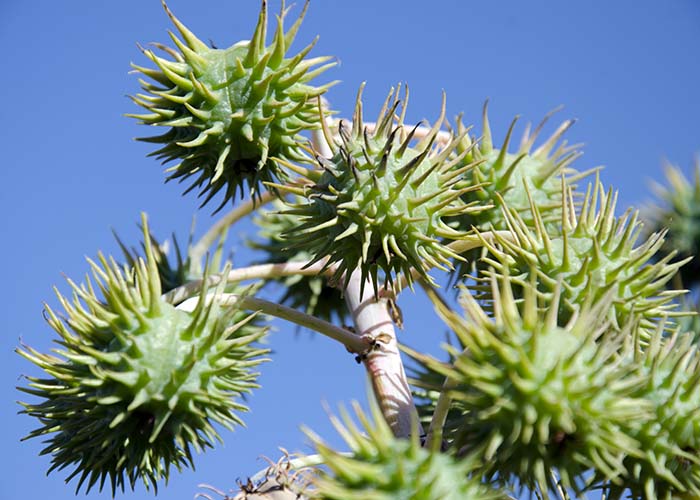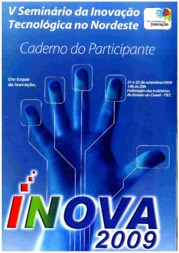Genetic research develops atoxic castor oil plant that can feed animals
Genetic research develops atoxic castor oil plant that can feed animals
Scientific research has managed to solve one of the biggest challenges for the use of castor bean (Ricinus communisL.) as animal feed. Scientists from Embrapa Genetic Resources and Biotechnology (Brasília, DF) developed a castor oil plant without ricin, one of the most toxic substances known to man, which is even cited in the International Convention prohibiting Chemical Weapons. The researchers estimate that the new material should take at least four years to be available in the market.
A protein that is present in the plant seed, ricin has prevented the use of castor meal, a by-product of castor oil processing, in animal feed. The protein also poses poisoning risks during the process of obtaining the oil, a product that is valued in the industry due to its high quality and use in cosmetics, paints, dyes, lubricants and several other products.
Therefore, despite being potentially interesting to feed animals, castor meal used to be discarded by farmers because of the toxic substance found exclusively in the endosperm (plant tissue that stores nutrients) from the plant's seeds.
Gene silencing in castor oil plant
The research conducted by the Embrapa researcher Francisco Aragão's team generated castor oil plants without the presence of ricin through gene silencing, a technique that “turns off” specific genes.
Seed proteins were used in experiments with rats at quantities that were 15 to 230 times the amount of the median lethal dose (LD50), enough to kill half of the population of the animals, and the entire group survived without sequelae. “Once it is incorporated, this result will promote major economic impacts in the castor oil production chain and in the animal production chain, with strategic and competitive insertion in the bioeconomy”, Aragão believes.
Promising market
The oil content in the castor seed varies between 40% and 43%. After the oil extration, the resulting castor meal is used as organic fertilizer, with low market value. Ricinless castor meal could be used in animal feed formulas, thus raising its market value.
Considering an estimated national production for the 2017/2018 crop year of 16,200 tons of castor beans, and that the meal represents about 60% of such amount, producing the meal from this oilseed could generate 9,720 tons for exploration in animal nutrition. Besides Brazil, the technology has the potential to be used in other castor oil producing countries, especially the United States, India and China.
Next steps
To have ricinless castor oil plants reach the market, there are several stages to be covered, explains the researcher José Manuel Cabral, head of Embrapa Genetic Resources and Biotechnology. “The next step will have to be associating Embrapa with private companies to incorporate the genetic trait in cultivars of commercial interest”, he details. This stage, to be developed in laboratories and greenhouses, will be followed by the stage of experiments in the field to determine the parameters required for the registration of such new cultivars at the Ministry of Agriculture, Livestock and Food Supply (Mapa).
Then they can prepare the process for approval by the National Technical Commission on Biosafety (CTNBio). “To follow this whole path, the commercial launch of ricinless castor oil plants should take four to five years, the time needed to fulfill all the requirements from the Brazilian legislation”, the executive anticipates.
Castor oil plantThis plant is the only commercial source of ricinoleic acid, the one that presents the highest viscosity index and stability among plant oils. Hence it is employed in the automobile industry, in brake systems, and even in the aerospace industry, which uses it as fluid for aircraft and rockets. Castor oil and its derivatives are used in the chemical, pharmaceutical, cosmetic, and high-quality lubricant industry. The seeds, once they are industrialized, originate castor oil and castor meal, which is the residue from the oil extration and consists in the most traditional and important byproduct of this production chain. World productionAccording to the Food and Agriculture Organization of the United Nations (FAO), the main castor oil producing countries are India (74%), China (13%), Brazil (6.1%) and Mozambique (2.5%). The largest consumers are China, the United States, France, Germany and Japan. Brazilian production in the 2017/2018 harvest had an increment of 23.7% in comparison with the previous harvest, reaching about 16,200 tons in an area of less than 34,000 hectares. The main producing region is the Northeast, and the state of Bahia accounts for more than half of the production. |
Translation: Mariana Medeiros
Maria Devanir Heberlê (MTb 5297/RS)
Embrapa Genetic Resources and Biotechnology
Press inquiries
recursos-geneticos-e-biotecnologia.imprensa@embrapa.br
Phone number: +55 61 3448-3266
Further information on the topic
Citizen Attention Service (SAC)
www.embrapa.br/contact-us/sac/



